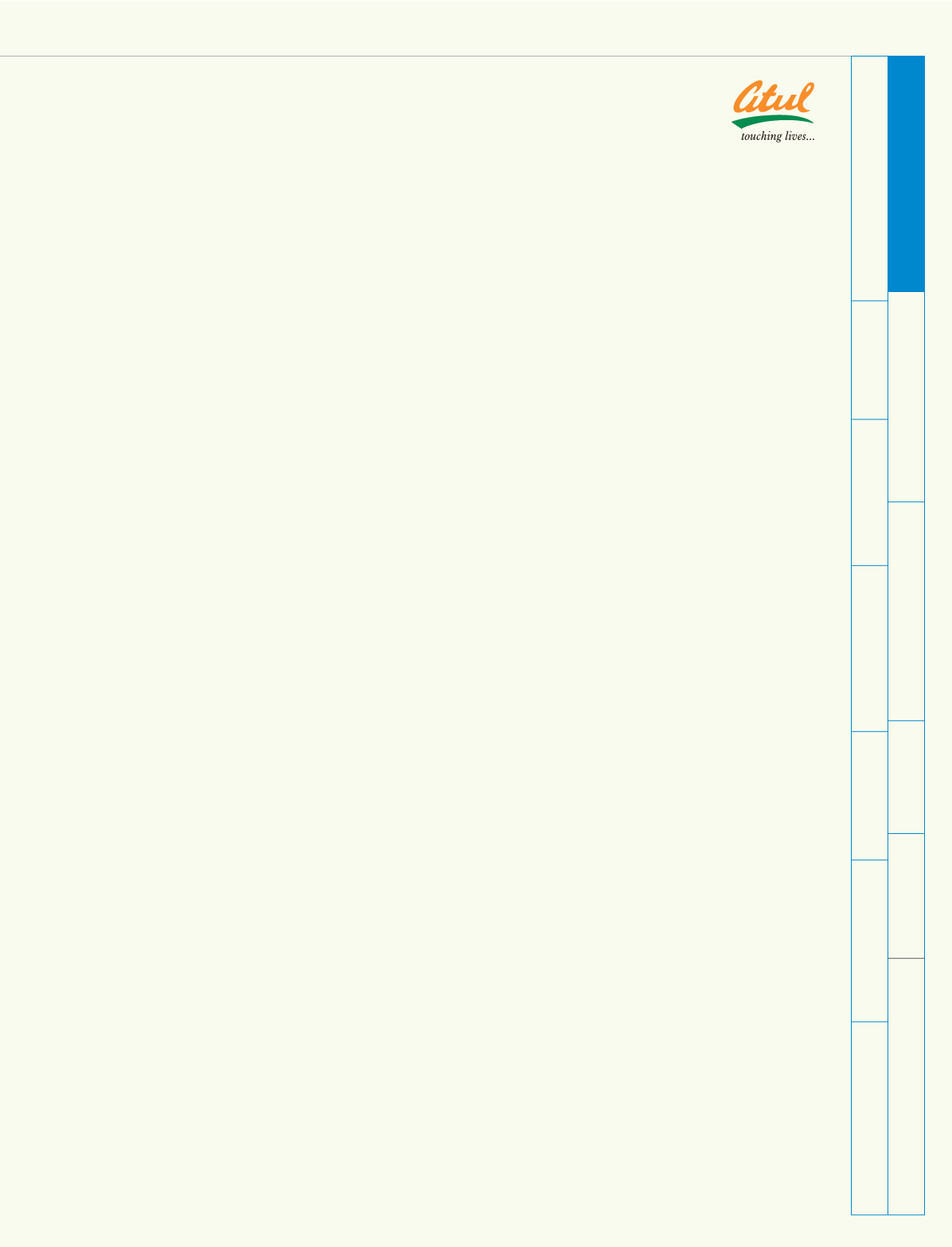

Corporate Identity Serving Diverse Industries Purpose and Values Overview by the Chairman Operational Highlights Financial Analysis Research and Technology
Safety, HealthandEnvironment Serving the Society Directors’ Report Management Discussion andAnalysis Report on Corporate Governance
Financial Statements
4 Impairment of Assets:
The carrying amounts of assets are reviewed at each Balance Sheet date if there is any indication of impairment
based on internal | external factors. An impairment loss will be recognised wherever the carrying amount of an asset
exceeds its recoverable amount. The recoverable amount is greater of the asset's net selling price and value in use. In
assessing value in use, the estimated future cash flows are discounted to the present value by using weighted average
cost of capital. A previously recognised impairment loss is further provided or reversed depending on changes in
circumstances.
5 Borrowing Costs:
Borrowing costs in relation to acquisition and construction of qualifying assets are capitalised as part of cost of such
assets up to the date when such assets are ready for intended use. Other borrowing costs are charged as expense in
the year in which these are incurred.
6 Investments:
Investments that are intended to be held for more than a year, from the date of acquisition, are classified as long term
investments and are carried at cost. However, provision for diminution in value of investments is made to recognise a
decline, other than temporary, in the value of the investments.
7 Inventories:
1 Raw Materials, Packing materials and fuel are valued at cost or net realisable value whichever is lower. Cost is
arrived at on Moving Weighted Average basis.
2 Stores and spares other than specific spares for machinery are valued at cost or net realisable value whichever is
lower. Cost is arrived at on Moving Weighted Average basis.
3 Materials - in - Process and Finished Goods are valued at cost or net realisable value whichever is lower. Finished
goods stocks are valued at full absorption cost (Including Excise Duty).
4 Purchased Finished Goods are valued at cost or net realisable value whichever is lower. Cost is arrived at on
Moving Weighted Average basis.
5 Materials in transit and in Bonded Warehouse are stated at the cost to the date of Balance Sheet.
8 Foreign Currency Transaction:
1 Initial Recognition:
Transactions denominated in foreign currencies are recorded at the rate prevailing on the date of
the transaction.
2 Conversion:
At the year-end, monetary items denominated in foreign currencies remaining unsettled are converted into rupee
equivalents at the year-end exchange rates. Non monetary items which are carried in terms of historical cost
denominated in a foreign currency are reported using the exchange rate at the date of the transaction.
3 Exchange Differences:
All exchange differences arising on settlement and conversion of foreign currency transactions are included in the
Profit and Loss Account, except in cases where they relate to the acquision of fixed assets, acquired out of India
in which case they are adjusted in the cost of the corresponding asset.
4 Forward Exchange Contracts not intended for trading or speculation purposes:
The premium or discount arising at the inception of forward exchange contract is amortised as expenses or
















